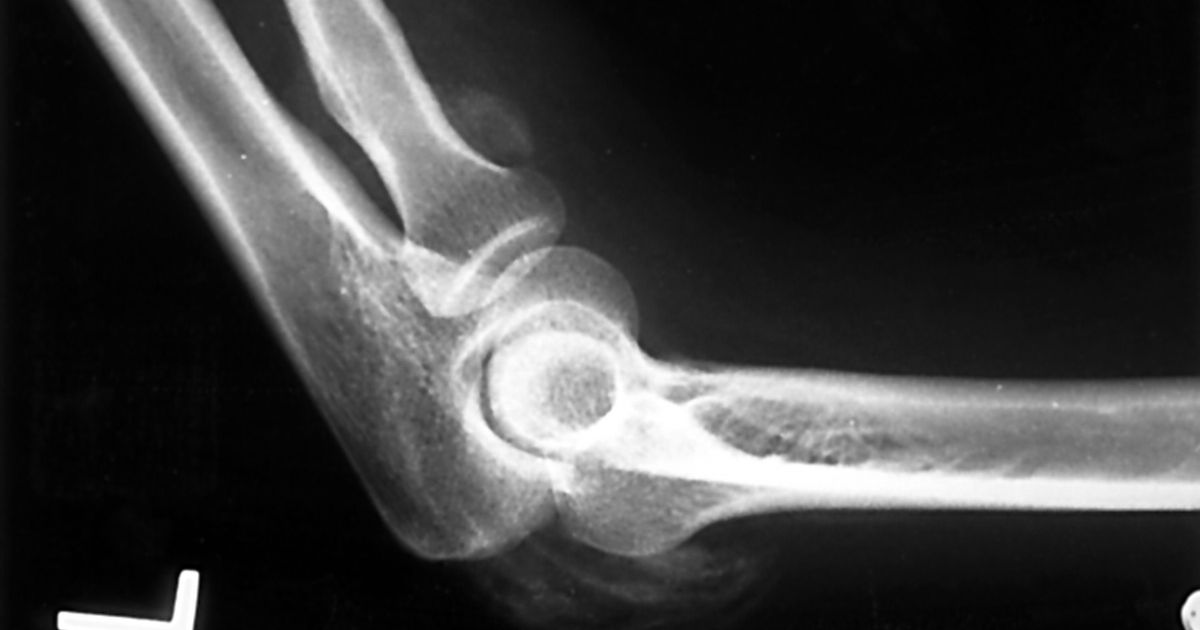Early Symptoms Of Fibromyalgia Everyone Should Be Aware Of
Fibromyalgia is characterized by muscle pain, tenderness, and fatigue. It is a disorder that is usually accompanied by memory, sleep, and mood issues. Researchers believe the condition arises from an overactive nervous system, which amplifies painful sensations. The condition is difficult to diagnose as it is not identifiable by blood work, x-rays, or scans. In its early stages, the symptoms of fibromyalgia are very general and appear similar to those of other conditions. Symptoms can start without a trigger and gradually worsen over time. Alternatively, they can be triggered by physical trauma, such as surgery, infection, and significant psychological stress. There is currently no cure for fibromyalgia, but medications, exercise, and relaxation techniques can help reduce symptoms. The following are some early symptoms of fibromyalgia:
Difficulty Sleeping

Difficulty sleeping is one of the most common symptoms of fibromyalgia. Seventy-five percent of people with fibromyalgia have problems with sleep, and the most common complaints are waking up feeling unrested and waking up throughout the night. Sufferers experience fewer hours of deep restorative sleep. Insomnia, the inability to fall or stay asleep, is also very common. Other common sleep difficulties include restless leg syndrome, which occurs in over fifty percent of people with fibromyalgia. Restless leg syndrome causes sensations in the legs that are uncomfortable. This may occur in other parts of the body as well and creates an irresistible urge to move around to relieve the discomfort. Sleep apnea is another common condition that occurs when breathing is disrupted during sleep. Some sufferers stop breathing hundreds of times throughout the night, resulting in oxygen deprivation to the brain. Sleep apnea requires immediate treatment; if left untreated, it can result in serious conditions, including high blood pressure, stroke, diabetes, and heart failure.
Stiffness And/Or Numbness

Neurological symptoms commonly associated with fibromyalgia may present as tingling, burning, stiffness, or numbness throughout the body. These symptoms are similar to those of myasthenia gravis and multiple sclerosis. If the sufferer has not been getting adequate rest, the sensations often increase. These symptoms may tend to be worse in the morning, which makes it difficult to get ready for the day. Studies have shown that fibromyalgia patients have weaker arteries, which results in less efficient circulation of blood in the body and produces stiffness and numbness. Stiffness in the body may also contribute to the tingling and burning sensations people with fibromyalgia experience as muscle stiffness can make the muscles press on the nerves. Keeping the muscles warm, doing gentle stretches, and engaging in low-impact exercise can keep muscles relaxed and improve their mobility.
Restless Legs Syndrome

Individuals who have this disease are also more likely to develop restless legs syndrome. Restless legs syndrome (RLS) is a neurological disorder that causes uncomfortable sensations in the legs and creates an urge to move the legs, hence restless. RLS has been described as causing a burning, creeping, crawling, or tugging sensation in the legs, and can range from minor to painful. A study published in the Journal of Clinical SleepMedicine discovered that thirty-three percent of patients with fibromyalgia also had restless legs syndrome, compared to the three percent of patients who did not have fibromyalgia. The results of the study are significant because sleep disruption caused by restless legs syndrome can exacerbate symptoms of fibromyalgia and affect the patient’s quality of sleep.
Memory Loss

During the early stages of the disease, fibromyalgia patients may report experiencing problems with concentration and memory loss. These symptoms usually occur alongside general symptoms, including chronic headaches, sensitivity to noise and light, joint problems, restless leg syndrome, pelvic pain, and depression. Some other cognitive symptoms may include difficulty learning new information and switching between tasks. Certain lifestyle changes can help fibromyalgia patients improve their cognitive functioning, including sleeping better, getting a moderate amount of exercise, making any necessary modifications to medications in consultation with a doctor, not trying to multitask, practicing meditation, working on puzzles, and learning memory tricks (for example, writing lists and repeating mnemonics).
Chronic Headaches

Individuals dealing with fibromyalgia often report experiencing chronic headaches, as one study of 100 patients with chronic headaches or migraines, discovered that out of these 100, thirty-six also had fibromyalgia. The patients with both conditions experienced greater pain severity, disability, and depression compared to patients who just experienced chronic headaches.
Fibromyalgia patients experience chronic headaches due to the increased excitation within the nervous system, meaning the nervous system over-responds to stimulation that is not normally painful. Similar to migraines, abnormalities in serotonin, the hormone that is responsible for controlling pain, may be a contributing factor to the increased excitation individuals with fibromyalgia deal with. High levels of substance P, a brain chemical that is involved in pain sensation, are incredibly high in patients with this condition, which may also contribute to them experiencing chronic headaches.
Irritable Bowel Syndrome

Irritable bowel syndrome (IBS) is a common gastrointestinal condition that causes abdominal pain, discomfort, constipation, and diarrhea. IBS often co-exists with fibromyalgia: up to seventy percent of people with fibromyalgia have IBS. Both conditions are associated with hypersensitivity of cells to stimuli. In IBS, the intestines are hypersensitive, and in fibromyalgia, the muscle tissues and skin are hypersensitive. In either case, the brain does not function properly to limit pain sensations from stimuli, which increases feelings of pain in sufferers. Patients with IBS tend to have pain in their pelvic area and problems with digestion. Some treatments to help reduce IBS symptoms include medication, cognitive behavioral therapy, exercise, and relaxation techniques. Always speak with a doctor before starting any treatment.
Painful Menstrual Periods

Women are ten times more likely to develop fibromyalgia compared to men, and unfortunately, for some of these women, that also includes excruciating menstrual periods and cramping. The part of the nervous system that is responsible for regulating menstrual periods is very sensitive to any changes the body may experience, which includes symptoms of fibromyalgia. A majority of women who have this condition report an increase in their symptoms prior to their impending periods and during menses.
Although these symptoms and the amount of pain experienced is strictly individual, any symptom that is uncomfortable or painful for the patient can worsen during her period. Symptoms that may flare up during a period include widespread pain, fatigue, memory problems, chronic headaches, and difficulty sleeping. Women may also experience an increase in dysmenorrhea, which is menstrual pain and cramping that is strong enough to disrupt their daily lives.
Extreme Fatigue

Fibromyalgia patients may experience extreme fatigue to the point that it interferes with personal, social, and occupational life. This may occur in the early stages of the disease and is the second most common symptom of the disorder. (The most common symptom is body aches and deep muscle pain.) The fatigue associated with fibromyalgia has been described as 'flu-like' and can even occur immediately upon waking up in the morning. The extreme fatigue experienced often occurs in conjunction with emotional problems, including depression and anxiety. Daytime naps may sometimes help deal with extreme fatigue, but at other times, they may fail to provide relief.
Tender Points

Fibromyalgia patients experience widespread pain, but they also experience tenderness at specific points along the body or near the joints. Fibromyalgia sufferers feel pain when these tender points are pressed on or touched. Researchers have identified eighteen tender points, and the American College of Rheumatology suggests that in diagnosing fibromyalgia, an individual must test positive for at least eleven of the eighteen tender points. Some tender point areas include the back of the neck, the forearms near the elbow crease, in front of the neck on each side of the larynx, the hips, the lower back, the back of the knees, the upper back, between the shoulders and neck, and the chest.
Temperature Sensitivity

Temperature sensitivity is the inability to adapt to changes in temperature while having a lower threshold for both hot and cold stimuli, which can create pain for the patient. In our bodies, we have an entirely different set of nerves that sense temperature changes. These nerves are on our blood vessels, which can help explain this symptom, as individuals with this disease are known to have blood flow abnormalities and temperature sensitivity. Researchers have discovered that patients with this chronic condition have extra temperature sensing nerves along with different skin blood vessels called AV shunts, which are in the hands, feet, and face. These vessels are responsible for adjusting blood flow in response to temperature changes, which might help explain why fibromyalgia patients experience pain when it comes to temperature changes.
Sensitivity To Loudness & Brightness

The exact causes of light sensitivity and loud noises for those with fibromyalgia aren’t completely known, but these symptoms are called “generalized hypervigilance.” This means the body is on high alert and incredibly sensitive to multiple types of stimuli, such as lights and sounds. For patients with this condition, hypervigilance can overwhelm them, and possible reasons include nervous system abnormalities, stress-system (HPA axis) issues, neurotransmitter dysregulation, and blood pressure irregularities. Common symptoms of generalized hypervigilance in relation to fibromyalgia that an individual can experience include anxiety, a rapid heartbeat, trembling, sweating, irritability, labored breathing, fatigue, and sleep difficulties due lights and sounds.
Myofascial Pain Syndrome

Myofascial pain syndrome (MPS) is pain and inflammation that affects the body’s soft tissues. MPS is a chronic condition that affects the tissues that cover the muscles. It may affect one single muscle or an entire group of muscles. MPS is one of the early signs of fibromyalgia, but it can be treated alone. Ways to treat MPS include physical therapy, slow stretches, massage therapy, and combinations of the aforementioned. MPS may be caused by fibromyalgia and injuries and may be worsened by further injuries, stress, and anxiety.
Ossification

Ossification is the process of cartilage or fibrous tissue ossifying and turning into bone. Ossification is very painful and can limit the range of motion and movement. Aside from being a symptom of fibromyalgia, ossification can also be caused by genetics and trauma and injury to an area of the body.
Ossification can be treated by resting the affected muscle, icing for fifteen to twenty minutes at a time, compressing the area, elevating the injured limb to help drain excess fluid, and by gentle stretching. Anti-inflammatory medications and orthotics may help, along with physical therapy.